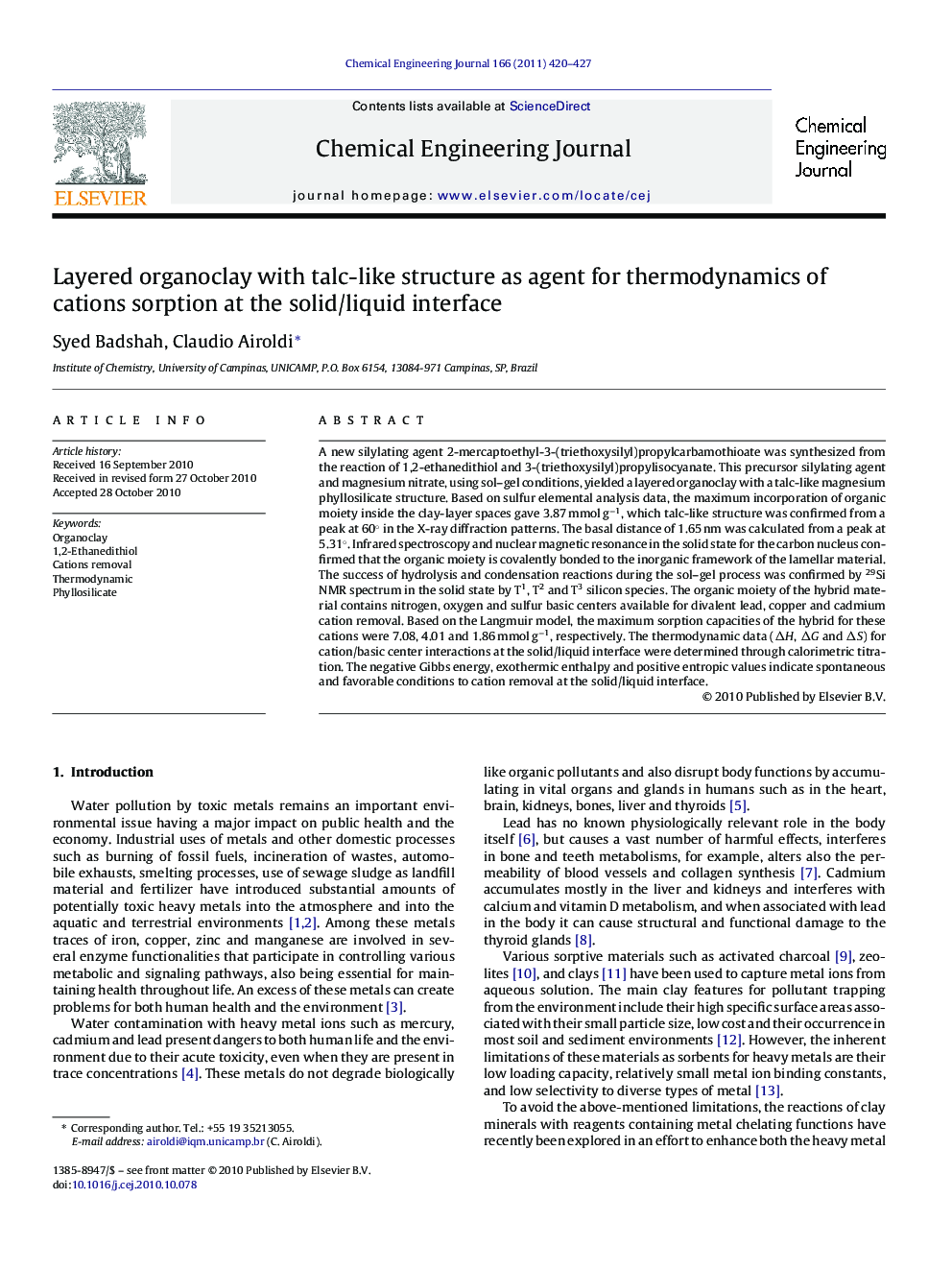| Article ID | Journal | Published Year | Pages | File Type |
|---|---|---|---|---|
| 151809 | Chemical Engineering Journal | 2011 | 8 Pages |
A new silylating agent 2-mercaptoethyl-3-(triethoxysilyl)propylcarbamothioate was synthesized from the reaction of 1,2-ethanedithiol and 3-(triethoxysilyl)propylisocyanate. This precursor silylating agent and magnesium nitrate, using sol–gel conditions, yielded a layered organoclay with a talc-like magnesium phyllosilicate structure. Based on sulfur elemental analysis data, the maximum incorporation of organic moiety inside the clay-layer spaces gave 3.87 mmol g−1, which talc-like structure was confirmed from a peak at 60° in the X-ray diffraction patterns. The basal distance of 1.65 nm was calculated from a peak at 5.31°. Infrared spectroscopy and nuclear magnetic resonance in the solid state for the carbon nucleus confirmed that the organic moiety is covalently bonded to the inorganic framework of the lamellar material. The success of hydrolysis and condensation reactions during the sol–gel process was confirmed by 29Si NMR spectrum in the solid state by T1, T2 and T3 silicon species. The organic moiety of the hybrid material contains nitrogen, oxygen and sulfur basic centers available for divalent lead, copper and cadmium cation removal. Based on the Langmuir model, the maximum sorption capacities of the hybrid for these cations were 7.08, 4.01 and 1.86 mmol g−1, respectively. The thermodynamic data (ΔH, ΔG and ΔS) for cation/basic center interactions at the solid/liquid interface were determined through calorimetric titration. The negative Gibbs energy, exothermic enthalpy and positive entropic values indicate spontaneous and favorable conditions to cation removal at the solid/liquid interface.
